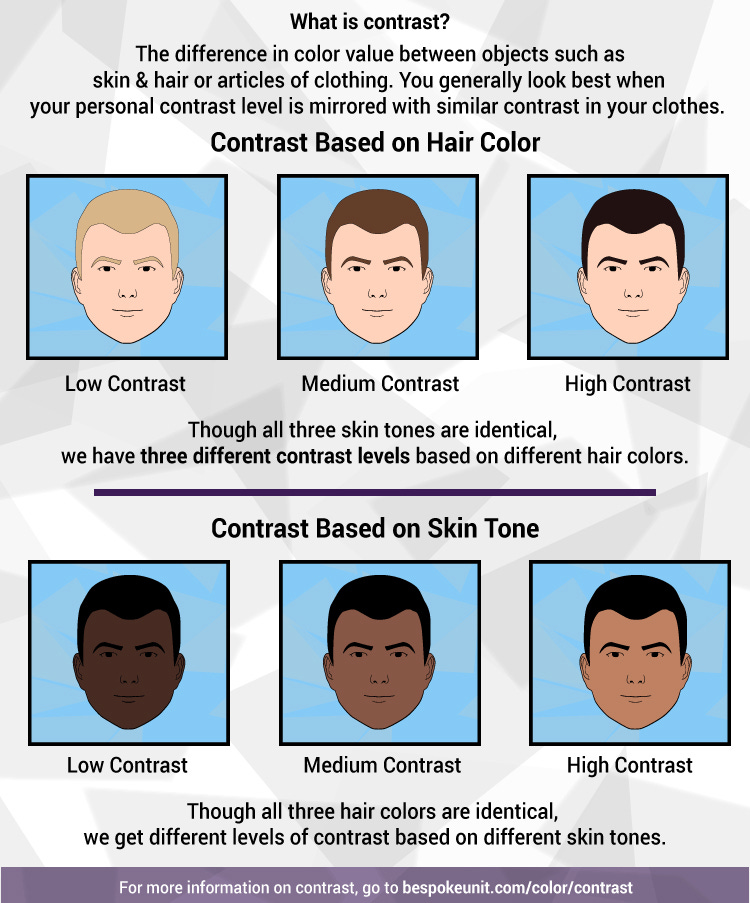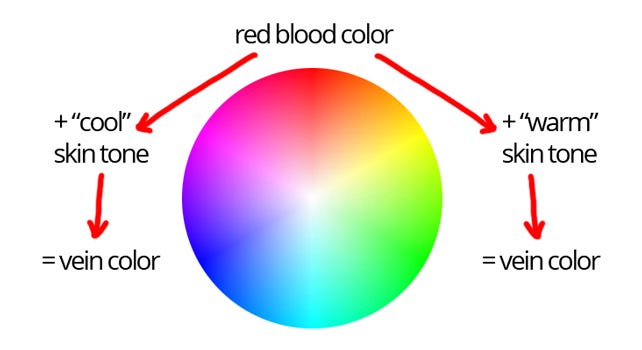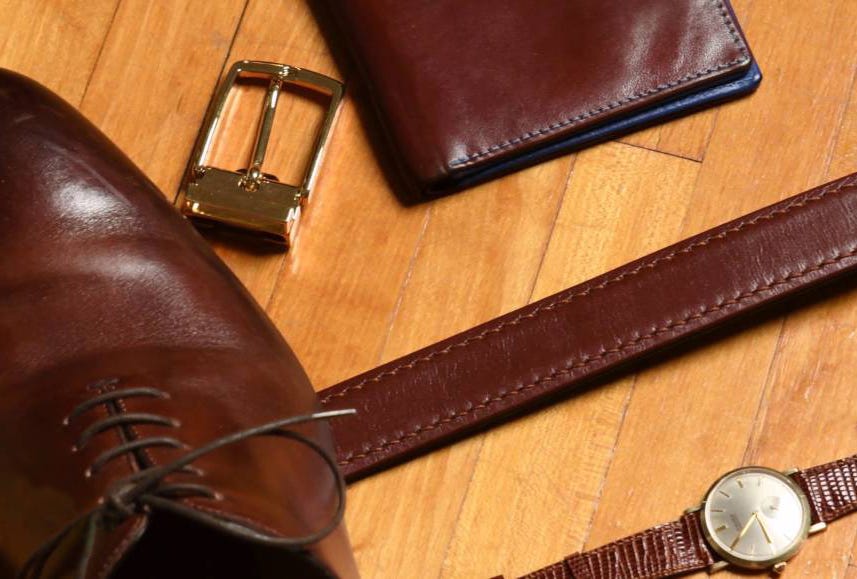How To Choose Your Wardrobe Colors: Men’s Fashion 103
Colors and contrast for timeless style
You should have a good foundation and know what to wear depending on the occasion. Now it’s time for the more personalized stuff. You’ll need the right fits (covered in my next article) and the right colors.
Most people under-complicate or over-complicate this. Most of the knowledge out there can be thrown out the window. If you want an overview of color theory and psychology, check out my article here.
The important part is color pairings. With fashion, you want to choose 1-3 colors for an outfit (including neutral colors). If you add too many colors and patterns… welcome to clown world. It's best to have complementary, analogous, or monochrome color combinations.
Some people argue that if you choose too few colors, you may not stand out. Certain color pairings are also more conservative than others. These are valid points, but if you’re new to fashion, you should ignore them for now. Stick with the basics. Minimal colors, patterns, textures, etc.
Once you’re safely dressing at a chad level, then you can step up your game. Don’t try running before you can walk.
Now, the first thing to understand is that color choices are based on YOU. Your hair color, eye color, and skin color. Good choices complement your existing looks.
Principle one: personal contrast levels
You want to draw attention to your face. Low-contrast guys should go with light-colored clothing, and high-contrast guys prefer dark-colored clothing. Medium-contrast guys can take either route.
Low contrast = Your hair closely matches your skin color. Or you’re bald.
Examples: Daniel Craig, Ryan Gosling, Terry Crews, Dwayne Johnson, Steve McQueen
Clothes to wear: white, tan, beige, light gray, other light colors
Medium contrast = Tricky to define since it’s the in-between category; brown hair or medium-dark skin usually falls into this area. Some overlap exists with low/high contrast.
Examples: Brad Pitt, Benedict Cumberbatch, Arnold Schwarzenegger, Samuel L Jackson with hair
Clothes to wear: basically anything you want
High contrast = There’s a significant difference between hair color and skin color.
Examples: Bruce Lee, Russell Crowe, Hugh Jackman, Antonio Banderas, Keanu Reeves, Will Smith
Clothes to wear: black, dark gray, charcoal, dark brown, navy blue, other dark colors
Copying celebrity fashion can be a handy cheat sheet. Just pick someone who clearly has professional stylists. Not Zuckerberg.
Principle two: finding out your skin tone
Skin isn’t just light/medium/dark. There are colors within your skin too. If you’ve compared your hands/arms to others, you may notice it. Most people have never tried this. For example, I have light skin with pink-red tones. Every woman who’s compared my skin tone with theirs has more yellow tones. For some reason, this fascinates certain women. Try it sometime when there’s an opportunity.
These “undertones” are helpful for choosing which colors to wear. Knowing these even exist will give you a big edge in the fashion game. Almost no one discusses this.
For wearing cool colors:
Pink/red skin
Blueish veins
For wearing warm colors
Yellow/gold skin
Greenish veins
If you aren’t sure which category you fit into, you’re probably in the middle/neutral zone. That means you can go with either cool or warm colors.
How does this work? It goes back to our color wheel.
Principle three: eye color
Eye color isn’t a big determinant in fashion. It’s hard to see from a distance. Basing wardrobes on hair and skin color is more impactful.
If you have blue/green/gray eyes, cool colors will complement them (purple, blue, teal, etc) or you can try to match your eye color exactly. If you have brown or otherwise dark eyes, try warm colors (red, orange, yellow, etc)
Something simple, like a t-shirt or tie, can help bring out your eyes. Don’t base your entire outfit around this or it’ll look weird. Neutral colors are big these days.
Eye color is kind of a subcategory under skin tone. Undertones and eye color will line up for most. A guy with cool skin tones may have blue or gray eyes, for example. If this is the case for you, deciding on colors is easier.
Wearing neutral colors
You can build entire wardrobes out of neutrals alone. They’re typically meant as complementary, but they’re versatile; you can do a lot. Everyone should have some of these to mix with your colors mentioned above.
Black = Looks good on everyone, especially medium/high contrast men. You can do all-black outfits with no problem. I know people who are lazy about fashion so they only buy black.
Gray or tan/beige = Better for low-contrast guys. You can mix different shades to get a clean monochromatic look (such as a light gray shirt with dark gray pants).
White = A well-fitting white shirt works for everyone. Likewise, a good pair of white casual shoes is valuable. Just don’t try all-white outfits. I’m not a big fan of white pants or jackets, but YMMV.
Here’s some example outfits which only use neutral colors.
Wearing seasonal colors
This is an advanced topic so I won’t go in-depth yet. Just know it’s an option. Gravitating toward certain colors/styles can be more impactful in certain months. Pastels in spring, earth tones in fall, etc.
Accessories which need to properly match
If you’re wearing pants, your sock color should match. Some guys can get away with crazy colors and patterns in their socks, but it (1) has to be part of your personality (2) the rest of your outfit has to be pretty plain.
If you’re wearing shorts, then your sock color doesn’t matter, because you need no-show socks (or no socks at all).
With casual wear, you otherwise don’t need to match anything up 100%. It helps, but there’s flexibility. I’ll cover this in a future article.
With more formal wear, you do need to match. Leather shoes and belts should ideally be from the same manufacturer for perfect color matching. If you have a leather-band watch, that band should be close to your shoe/belt color.
Sunglasses/glasses match by default if you’re doing it right. If your glasses are colorful, you’re doing it wrong. Frames should be black, brown, or some type of metal.
I usually don’t recommend hats. If you want one anyway, it should be cohesive compared to the rest of your outfit. When in doubt, go with navy blue.
Executive Summary
This is fairly dense info, so feel free to save it for future reference.
Light-contrast men primarily wear light-colored clothing. Dark-contrast men primarily wear dark-colored clothing. Medium-contrast guys can do either.
Cool-skinned guys wear cool and/or neutral colors. Warm-skinned guys wear warm and/or neutral colors. Neutral-skinned guys can do either.
When in doubt, consider your eye color or wear neutral colors.
You’ll have infinite combinations from this knowledge.
Up next: fits
In part 4 of our introduction to fashion, we have to talk about what makes clothes fit well. Be sure to subscribe, since this ties everything together.
Read the full series:
The Foundations: Men’s Fashion 101
Dress Codes and Style: Men’s Fashion 102
How To Choose Your Wardrobe Colors: Men’s Fashion 103 ←- you are here
Introduction to Fit: Men’s Fashion 104
Introduction to Shoes: Men’s Fashion 201
Introduction to Watches: Men’s Fashion 202
Introduction to Accessories: Men’s Fashion 203
Introduction to Fragrances: Men’s Fashion 204
Introduction to Hairstyles and Beards: Men’s Fashion 205











